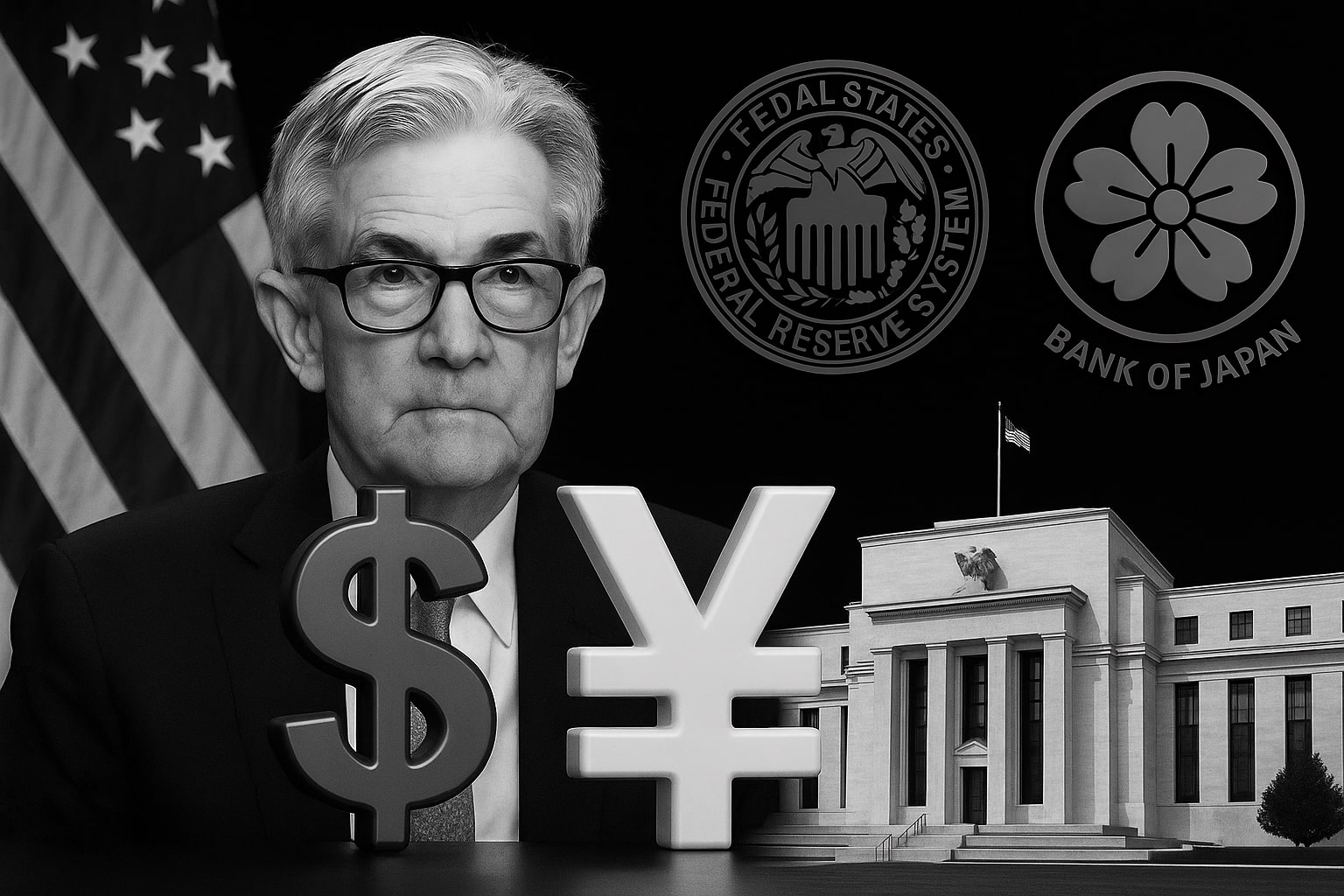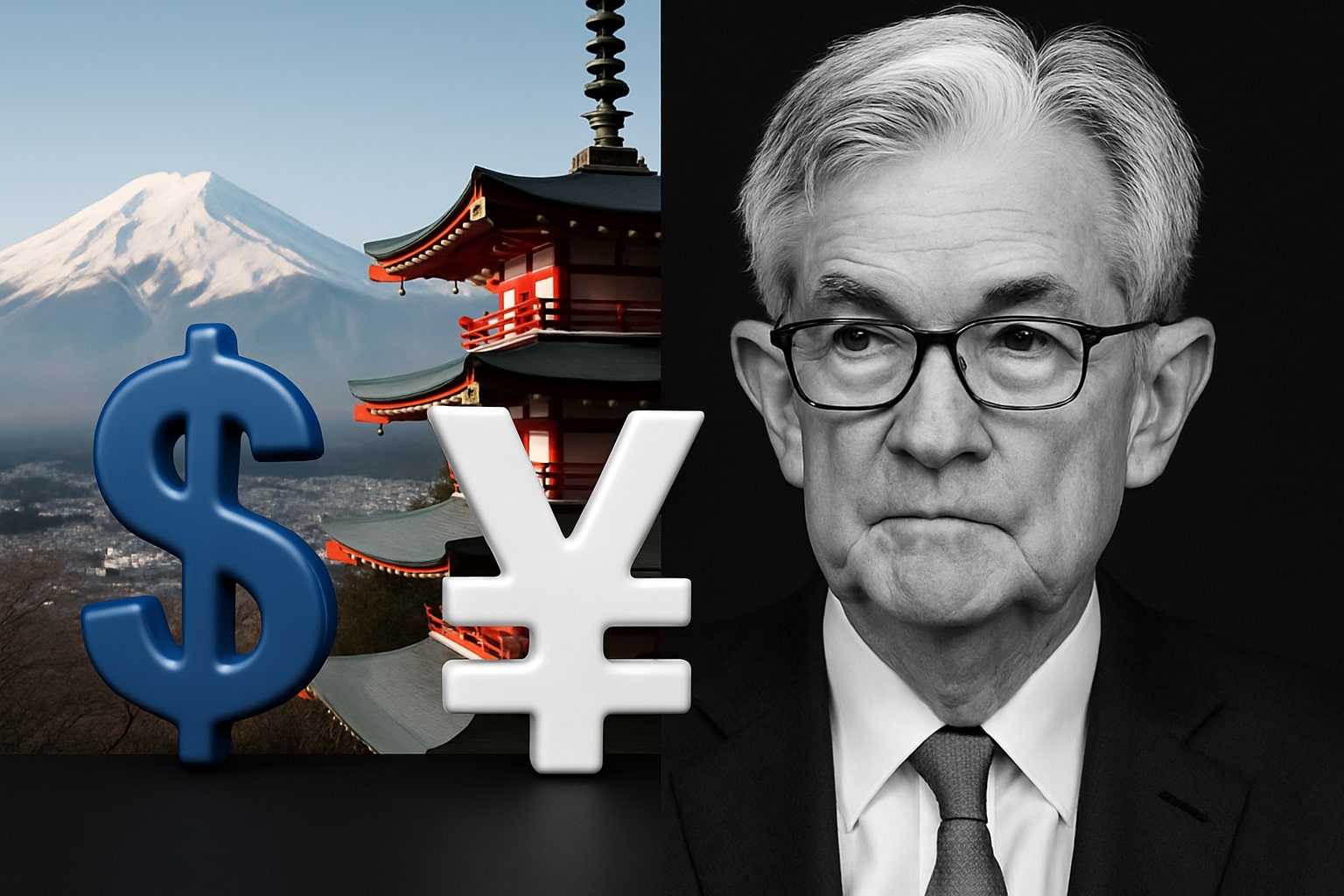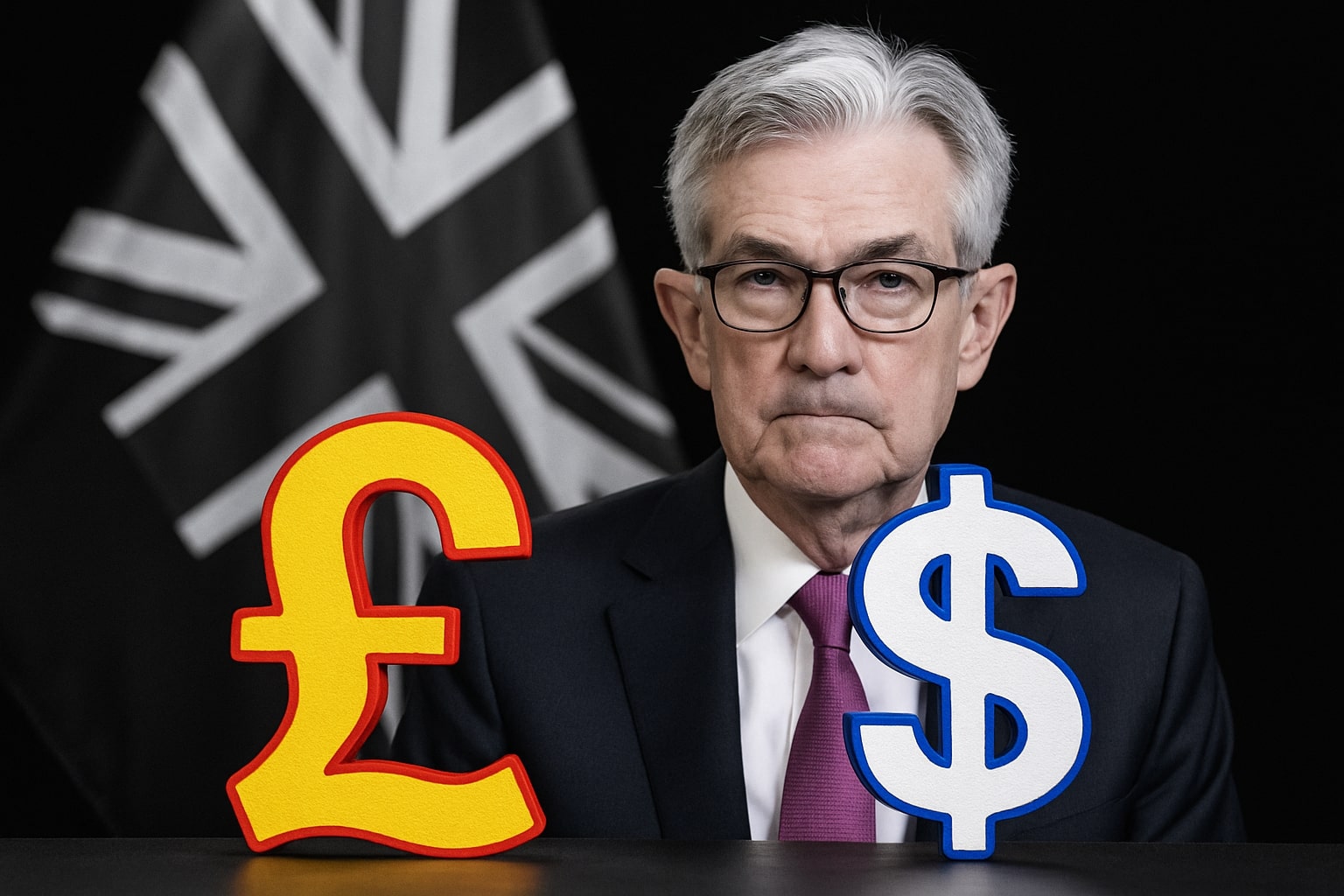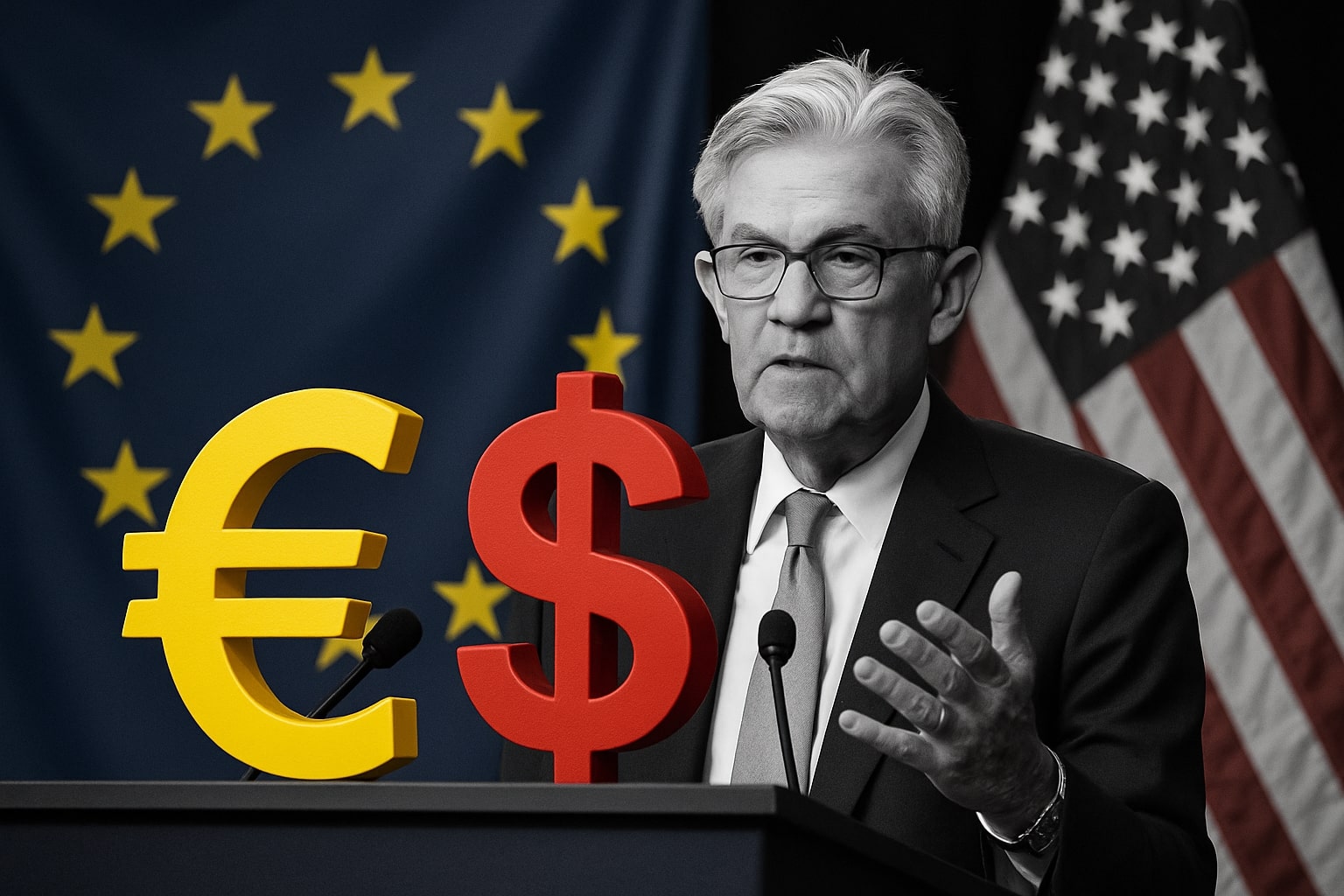
USD/JPY Price Forecast - Hovers at 151.12 After Eight-Month High at 153.27
Dollar-Yen volatility spikes amid Japan’s political turmoil and dovish BoJ stance. With U.S. inflation reports delayed and Trump’s 100% China tariffs shaking global risk sentiment, traders eye 153.00 resistance | That's TradingNEWS
USD/JPY Climbs to 151.12 as BoJ Policy, Tariffs, and U.S. Shutdown Amplify Market Volatility
The USD/JPY pair surged above the 150 threshold, reaching 153.27, its highest level in eight months, before retreating to close the week near 151.12, up 2.49%. The move reflected a combination of political and macroeconomic catalysts—chief among them, Sanae Takaichi’s victory in Japan’s LDP leadership race, the BoJ’s dovish stance, and rising U.S. dollar demand amid global trade turmoil. However, growing uncertainty following the LDP–Komeito coalition breakup and the ongoing U.S. government shutdown has left the pair exposed to volatility as traders weigh whether this rally can hold through the week.
BoJ’s Dovish Tone Drives Yen Weakness While Political Uncertainty Builds
Sanae Takaichi’s ascent to the top of Japan’s ruling party solidified expectations of continued ultra-loose monetary policy, sparking an aggressive yen selloff. Her public endorsement of maintaining negative interest rates and delaying any quantitative tightening drove speculative flows into the dollar. The USD/JPY pair’s surge past 153 signaled market conviction that BoJ Governor Kazuo Ueda would remain cautious on tightening, despite rising inflation pressures.
However, the collapse of the LDP–Komeito coalition has injected new political risk. Should Takaichi fail to secure a majority, her ability to sustain dovish fiscal and monetary coordination may weaken, potentially capping USD/JPY’s upside. The Nikkei’s record-breaking rally above 42,000 points reflected short-term optimism, but political instability could reverse gains if the BoJ turns hawkish or the coalition remains fractured heading into late October.
Economic Data: Machinery Orders and Inflation Expectations to Test Yen’s Strength
All eyes now turn to Japan’s machinery orders data on October 16, expected to rebound +0.5% month-on-month after plunging -4.6% in July. A stronger print would bolster business sentiment and wage growth expectations—factors that could justify a BoJ rate hike before year-end. Conversely, another contraction would reinforce Ueda’s dovish narrative, extending yen weakness and keeping USD/JPY supported above 150.50.
Japan’s core inflation remains above 2.7%, while household spending fell 2.5% year-over-year, reflecting a consumption squeeze despite wage gains. These conflicting dynamics are forcing the BoJ to balance inflation control with economic stability. Traders expect Ueda’s upcoming remarks to determine whether the pair retests 153.27 or consolidates around 150.00.
U.S. Shutdown, Fed Policy, and Tariff Shock Shape Dollar Trajectory
On the U.S. side, fiscal paralysis continues to cloud investor sentiment. The seventh failed Senate vote to pass a stopgap funding bill extended the government shutdown, delaying critical reports such as CPI, payrolls, and jobless claims. The lack of data has limited visibility into Fed policy, yet Fed Chair Jerome Powell’s October 14 speech is expected to provide crucial guidance.
If the shutdown extends beyond next week, traders anticipate the Fed could shift toward a dovish tone, pricing in potential Q4 rate cuts. Current futures markets assign a 64% probability of one rate cut by December, compared with 42% a week ago. However, strong U.S. inflation or retail sales data could counter that narrative—retail sales are forecast to rise 0.4% in September, following August’s +0.6% gain, while core PPI is expected at +2.9% YoY, slightly higher than the previous 2.8%.
These mixed dynamics keep the dollar’s path uncertain. A hotter U.S. print could send USD/JPY back toward 155.00, while weaker data and prolonged government gridlock could open downside toward 147.50.
Bond Yields and Tariff Tensions Reinforce Dollar Volatility
The broader macro backdrop remains dominated by Trump’s 100% tariff announcement on Chinese imports, a move that rattled global risk markets. The U.S. 10-year yield fell 0.09 percentage points to 4.05%, while the 2-year yield slipped to 3.52%, reflecting a flight to safety and diminished near-term rate hike expectations. The Wall Street Journal Dollar Index declined 0.3% on Friday, while the yen strengthened 1% intraday before fading as U.S. equities rebounded.
The dollar’s resilience continues to hinge on relative yield differentials. Even with Treasury yields falling, Japan’s rates remain anchored near zero, preserving the carry trade advantage that supports USD/JPY. The interest rate spread of roughly 400 basis points between U.S. and Japanese 10-year bonds remains one of the widest on record, discouraging sustained yen appreciation.
Market Technicals: USD/JPY Retains Bullish Bias but Faces Resistance at 153.27
The technical landscape shows USD/JPY trading firmly above both its 50-day ($149.35) and 200-day ($147.60) exponential moving averages, signaling a continuing bullish structure. A clean break above 152.00 could reintroduce the October 10 high at 153.27, while a sustained push above that level would target 155.00, aligning with the upper Bollinger band extension.
On the downside, immediate support lies at 150.00, followed by 149.35 and 147.50, levels that coincide with prior breakout zones. Momentum indicators, however, are flashing near-term caution: RSI sits at 68, approaching overbought territory, while MACD convergence suggests weakening upside momentum.
A corrective pullback to 150.00–149.80 would not negate the broader uptrend, but a daily close below 149.30 could trigger a deeper slide toward 147.50, where fresh buying interest is expected.
Global Trade Risk Adds Complexity to Yen’s Safe-Haven Role
Japan’s currency has long served as a safe-haven hedge during geopolitical crises. However, the evolving tariff war between the U.S. and China has distorted that dynamic. The yen’s 6.8% year-to-date decline reflects how domestic monetary policy has overshadowed external risk flows.
Still, with Trump threatening to impose tariffs by November 1, traders remain wary of renewed volatility. A deepening trade standoff could reignite demand for the yen if equity markets extend losses. Conversely, if risk sentiment stabilizes and the BoJ holds policy steady, the carry trade may overpower safe-haven flows, keeping USD/JPY buoyant into year-end.
Institutional Positioning and Market Sentiment
CFTC data shows speculative accounts holding a net short yen position of 123,000 contracts, marking the heaviest bearish positioning since 2022. Leveraged funds remain long USD/JPY, betting on rate divergence to persist. Meanwhile, Japanese corporates continue repatriating profits at favorable rates above 150, providing intermittent yen strength on dips.
Volatility indicators reflect heightened risk appetite—1-month implied volatility stands at 9.4%, up from 8.1% last week, suggesting traders are hedging against large swings around the BoJ and Fed speeches.
Read More
-
JEPQ ETF Holds $58.82 as Fund Flows Cool and Nasdaq Valuations Stretch
06.12.2025 · TradingNEWS ArchiveStocks
-
XRP ETFs Cross $1 Billion AUM as XRPI and XRPR Lead Institutional Wave
06.12.2025 · TradingNEWS ArchiveCrypto
-
Natural Gas Price Breakout: NG=F Soars to $5.50 on Cold U.S. Weather & LNG Export Boom
06.12.2025 · TradingNEWS ArchiveCommodities
-
USD/JPY Price Forecast - Dollar to yen Slides to 155.60, BOJ Hike Reprice Global Currency Markets
06.12.2025 · TradingNEWS ArchiveForex
Macro Correlation: Yen’s Ties to Gold, Oil, and Equities
The yen’s recent performance has diverged from traditional risk assets. Despite a $4,000 gold price and WTI crude collapsing to $58.90, the yen has failed to capitalize on risk aversion. The reason lies in Japan’s massive energy import costs, which rise as oil falls due to weaker global demand expectations, creating an inverse feedback loop that weakens the yen further.
The Nikkei 225’s 2.7% weekly gain, supported by exporter optimism and weaker currency conditions, underscores how domestic equities benefit from yen depreciation. However, should the yen strengthen sharply, export margins could compress, threatening equity valuations heading into Q4.
Forward Guidance: Fed–BoJ Divergence to Shape Year-End Path
Looking ahead, traders anticipate that the BoJ’s next rate move—if delivered—could arrive in Q1 2026, with a modest 10–15 bps hike to exit negative rates. In contrast, U.S. rate expectations now price in 75 bps of cumulative cuts through mid-2026, maintaining a favorable backdrop for USD/JPY bulls.
The interplay between Fed moderation and BoJ normalization will dictate whether USD/JPY can sustain above 150 or revert toward 147. If U.S. inflation stabilizes and the BoJ hints at patience, the path toward 155.00 remains open.
Verdict on USD/JPY: Short-Term Bullish, Mid-Term Cautious
The USD/JPY remains supported by political divergence, monetary policy gaps, and resilient U.S. data. However, its proximity to multi-decade highs leaves it vulnerable to sharp corrections if BoJ rhetoric turns hawkish or U.S. yields soften further.
At current levels near 151.12, momentum favors the bulls, but traders should brace for volatility around the upcoming BoJ and Fed events. Short-term, the bias remains Bullish, targeting 153.00–155.00, while medium-term traders should monitor 150.00–149.30 as the pivot zone defining whether the rally extends or exhausts.
Verdict: USD/JPY (Bullish, target 153.50 short-term, 155 medium-term; key support 149.30; risk of correction if BoJ hints at 2026 rate shift).



















